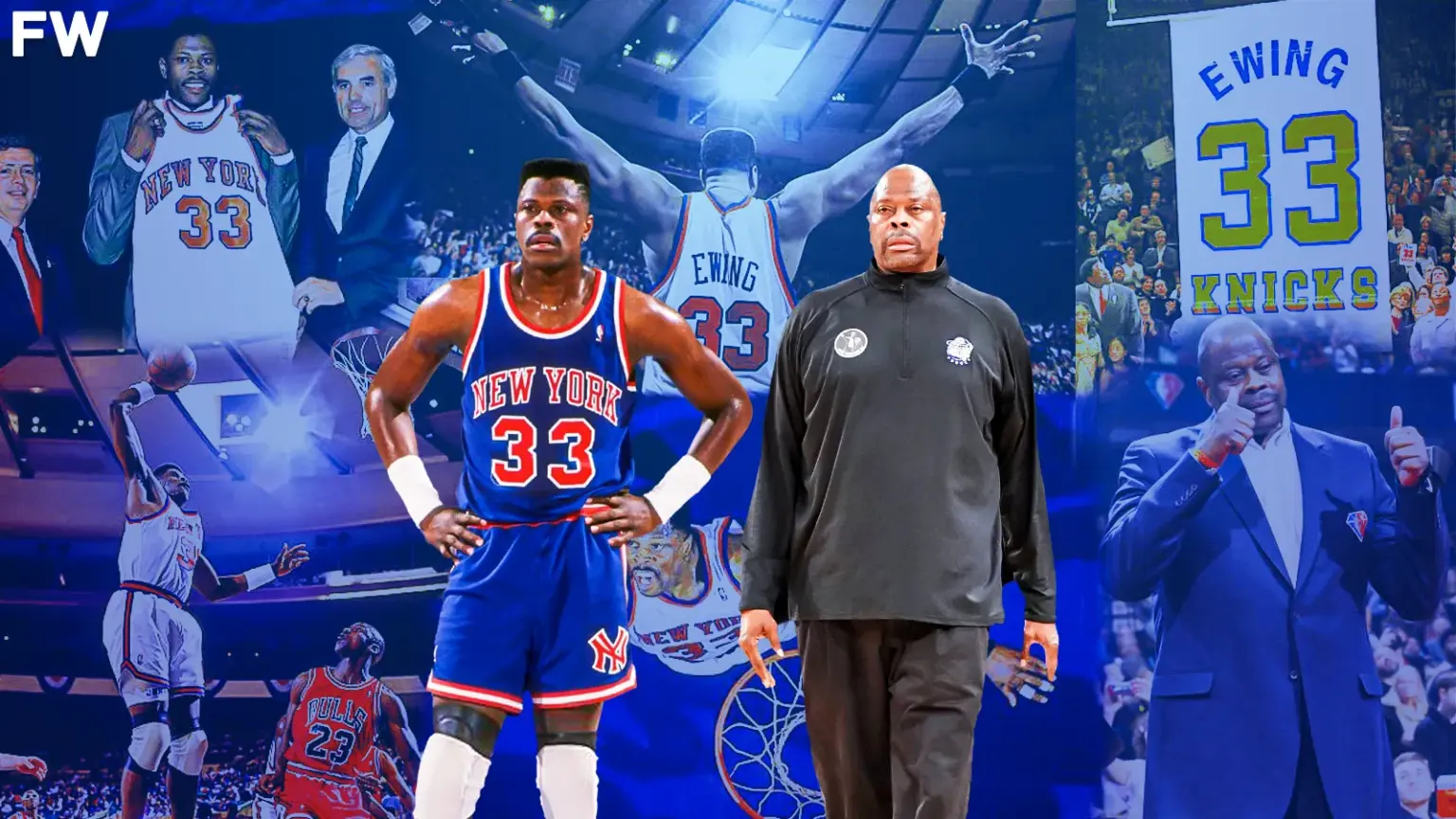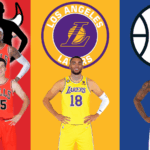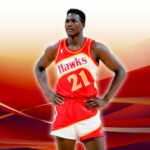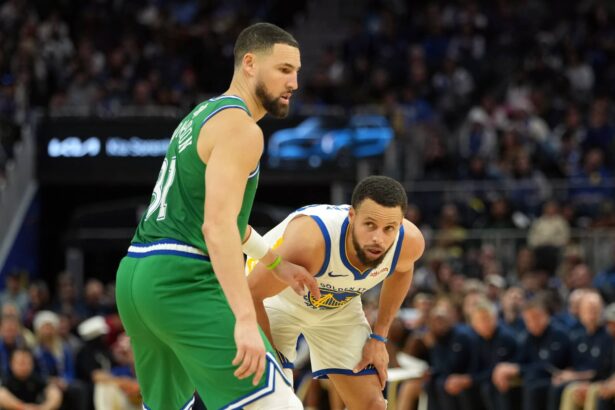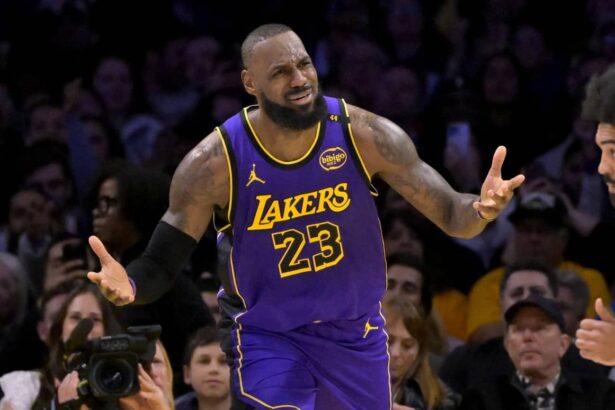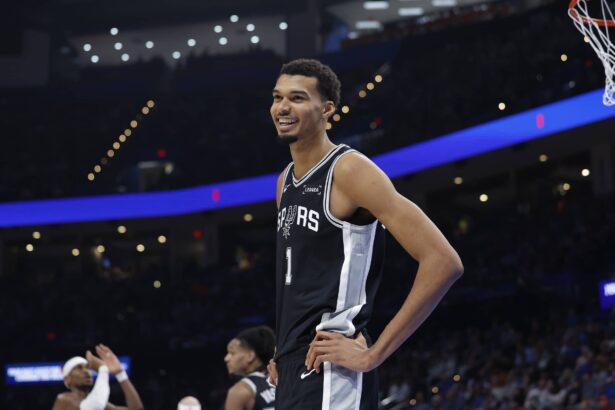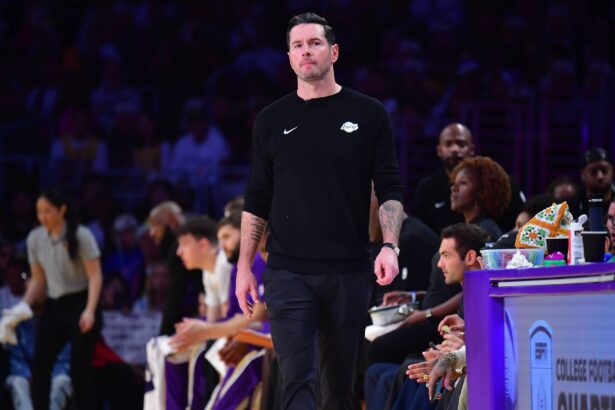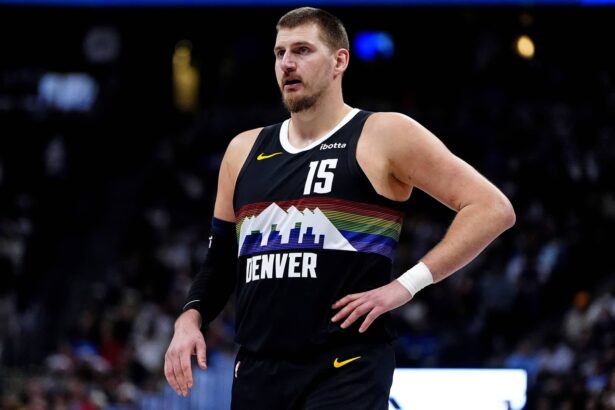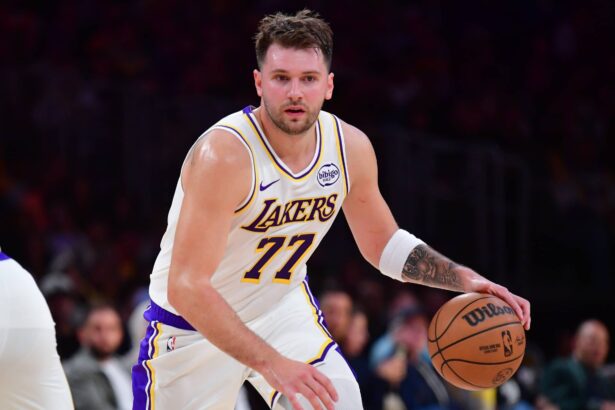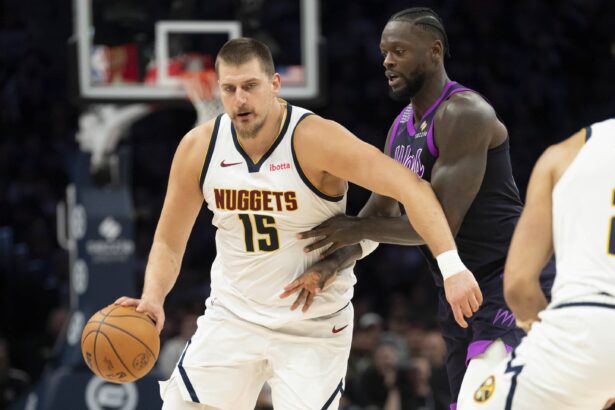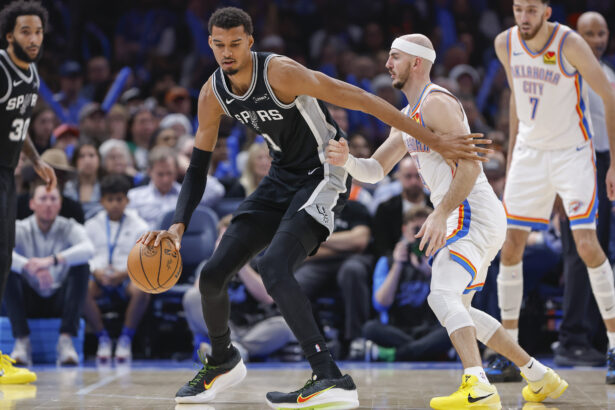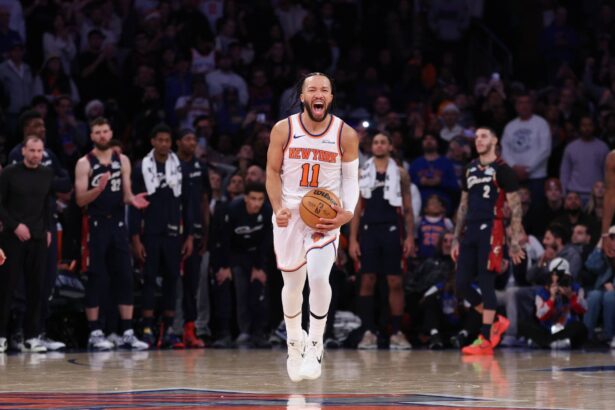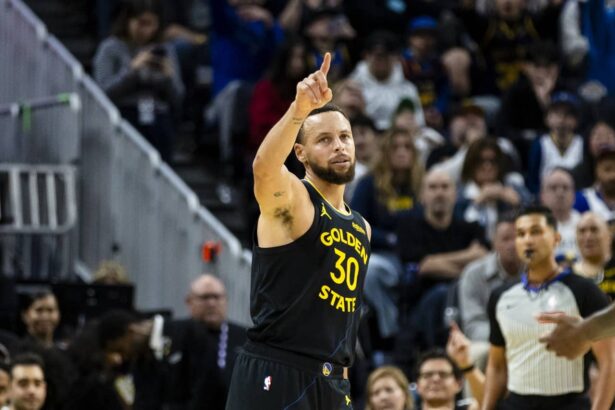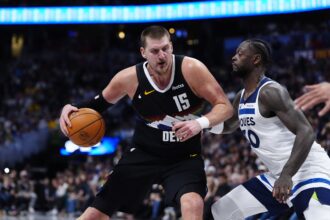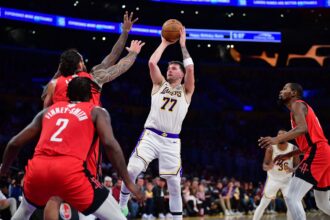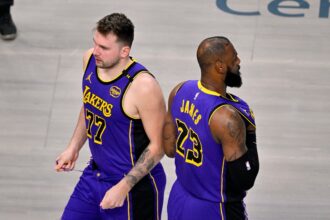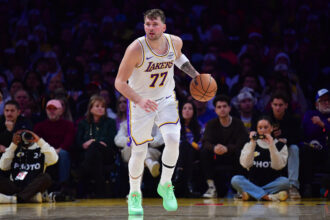- Patrick Ewing dealt with racism in high school
- Ewing ignored the hate to have a great college career at Georgetown
- Ewing was the face of the New York Knicks during the 1990s
Patrick Ewing is a name that is synonymous with basketball greatness. A towering presence on the court, Ewing made a name for himself at Georgetown University before going on to have a legendary career in the NBA.
- Patrick Ewing’s Early Life
- Ewing Becomes A College Star
- Ewing Becomes The Face Of The New York Knicks
- Ewing’s Coaching Career
- Next
- Wilt Chamberlain Biography: The Life, Career, And Legend Of The Most Dominant NBA Player Ever
- Magic Johnson Biography: How The NBA’s Greatest Passer Defeated A Deadly Illness To Become A Successful Businessman
- The Biography Of The G.O.A.T.: Michael Jordan
- LeBron James: The Biography Of The NBA’s King
- Kobe Bryant Biography: The Life Of The Black Mamba
But what many people don’t know is the story behind Ewing’s rise to fame. Born in Jamaica, Ewing moved to the United States as a child and faced many obstacles in his journey to becoming a basketball star.
Despite facing racism, language barriers, and financial struggles, Ewing persevered and became one of the most dominant players of his time. In this article, we will take a closer look at the inspiring journey of Patrick Ewing, from his early years to his time at Georgetown, to his unforgettable NBA career.
This is the biography of New York Knicks legend Patrick Ewing.
Patrick Ewing’s Early Life
Patrick Ewing was born on August 5, 1962, in Kingston, Jamaica, and he grew up with six siblings. When he was 12 years old, his family moved to Cambridge, Massachusetts, where he attended Cambridge Rindge and Latin School.
Ewing was already over six feet tall when he arrived in Cambridge, and he quickly gained attention from the basketball coaches at his new school. Despite being relatively new to the game, Ewing’s height and coordination made him a natural on the court.
Ewing’s talent continued to grow, as did his height, reaching seven feet before leaving high school. At Cambridge Rindge and Latin School, Ewing led his school to an incredible 77-1 record, including a 25-0 record as a senior.
Ewing put up averages of 22.7 points and 15.0 rebounds while shooting 72% as a senior, helping to lead his school to three state titles. Despite his success on the court, things weren’t easy for Ewing, as he often had to deal with racism.
Opposing crowds would tell all types of racist remarks at Ewing, but this wasn’t all. One time rival fans rocked Ewing’s team’s bus when they arrived to play an away game.
Ewing’s high school coach, Mike Jarvis, spoke about the racism Ewing faced in high school.
“We had bricks thrown through the windows of our yellow school bus,” Jarvis explained in an interview. “We had tires slashed. We had fights — it seemed like in every game. There were fights in the stands. There were people at times dressing up in gorilla outfits and throwing banana peels on the floor. And it got really, really ugly when he chose Georgetown over Boston College.”
Ewing ignored the racism and pure hate that fans threw at him and just played his game. His success on the court led to offers from top college programs around the country, but he ultimately chose to attend Georgetown University, where he would become one of the most iconic players in college basketball history.
Ewing Becomes A College Star
Patrick Ewing’s college career at Georgetown University was nothing short of legendary. He was a dominant force on both ends of the court, known for his impressive scoring ability, rebounding prowess, and shot-blocking skills.
In his first year at Georgetown, Ewing became one of the first freshmen to start on the varsity team. Ewing led Georgetown to a 30-7 record and led his school to Big East tournament championship.
After the Big East Tournament ended, Ewing’s Georgetown Hoyas entered the NCAA Tournament as the number one seed. It would be in this tournament where Ewing and his Georgetown Hoyas would fall at the hands of a freshman Michael Jordan’s game-winning shot in the championship game.
Despite losing 63-62, Ewing played great in the championship game. He finished the game with a team-high 23 points on 10-15 shooting while adding 11 rebounds.
Ewing may have been denied an NCAA championship in 1982, but by 1984, he’d get another chance, and this time. This time he and his team wouldn’t let anything stop them.
In 1984, Ewing led Georgetown to the NCAA championship game against the University of Houston. Ewing didn’t play the same dominant game as he did in the 1982 championship game, as he finished with just 10 points on 4-8 shooting.
Still, Ewing’s tough defense on another future NBA center, Hakeem Olajuwon, was enough to give Georgetown the 84–75 victory. Ewing was rightfully named the tournament’s Most Outstanding Player.
For his entire collegiate career, Ewing averaged 15.3 points, 9.2 rebounds, and 3.4 blocks per game while shooting 62.0% from the field. Ewing’s list of achievements in college is highly impressive and it led to him being the top choice for every NBA team in the 1985 NBA Draft.
Here’s the list of Ewing’s college awards and achievements:
– 1982 Big East Freshman of the Year
– 1982 Big East Defensive Player of the Year
– 1982 Second Team All-Big East
– 1982 NCAA Tournament West Regional Team
– 1982 NCAA All-Tournament Team
– 1983 Big East Defensive Player of the Year
– 1983 First Team All-Big East
– 1983 Consensus First Team All-American
– 1984 Big East Championship MVP
– 1984 Big East Defensive Player of the Year
– 1984 First Team All-Big East
– 1984 Big East Player of the Year
– 1984 NCAA Tournament West Regional Team
– 1984 Final Four Most Outstanding Player
– 1984 NCAA All-Tournament Team
– 1984 National Champion
– 1984 Consensus First Team All-American
– 1985 Big East Championship MVP
– 1985 Big East Defensive Player of the Year
– 1985 First Team All-Big East
– 1985 Big East Player of the Year
– 1985 NCAA Tournament East Regional Team
– 1985 NCAA All-Tournament Team
– 1985 Naismith Men’s College Player of the Year
– 1985 Consensus First Team All-American
– 1980s NCAA Tournament All-Decade Team
– Named one of the top 15 players in the 75 Years of March Madness Celebration
Even today, Ewing is remembered as one of the greatest college basketball players of all time and an icon of the sport. As you can see from his list of achievements, there’s no denying this fact.
Up next for Ewing was the NBA, and as mentioned earlier, every NBA team wanted to draft Ewing. The only question remaining was: which NBA team would get the first pick in the 1985 NBA Draft?
Ewing Becomes The Face Of The New York Knicks
The 1985 NBA Draft was the first draft to hold the lottery. In previous years, the two teams with the worst record in each conference would flip a coin, with the winner receiving the first pick.
This time, the NBA used the lottery, and teams with the worst win percentage had the best chance of landing the number one pick. This led to teams losing on purpose to try and get the first pick.
The New York Knicks were one of those teams and they secured the rights to draft Ewing first overall in 1985. This, they certainly did.
When Ewing first joined the Knicks, the team was struggling, not having a true identity as a team, ever since the Willis Reed and Walt Frazier era ended. Ewing’s arrival signaled a new era for the Knicks, and he quickly established himself as the team’s best player.
In his first season, Ewing was named Rookie of the Year, despite playing in just 50 games. Ewing averaged 20.0 points, 9.0 rebounds, and 2.1 blocks per game.
By his third season, Ewing led the Knicks to the playoffs behind 20.2 points, 8.2 rebounds, and 3.0 blocks per game. The Knicks finished with a 38-44, which earned them the eighth seed.
In the opening round of the playoffs, New York had to take on the mighty Boston Celtics, led by Larry Bird. At this point in time, New York simply didn’t have the firepower to compete with Boston, losing the series 3-1.
This didn’t stop Ewing from showing the world how good he really was and would become. In Game 4, Ewing grabbed 20 rebounds and in Game 3, Ewing dropped 31 points and grabbed 10 rebounds.
For the series, Ewing averaged 18.8 points, 12.8 rebounds, and 3.3 assists per game. Not bad for his first playoff series. Ewing would reach the NBA Playoffs for the next 12 seasons with New York, including the NBA Finals twice.
After Ewing and the Knicks struggled to beat the Michael Jordan Chicago Bulls in the playoffs, losing to Chicago in the 1989, 1991, 1992, and 1993 NBA Playoffs. Then, in the 1994 Semifinals, with Jordan retired, the Knicks finally defeated the Bulls 4-3.
The Knicks made the 1994 NBA Finals and played Hakeem Olajuwon and the Houston Rockets. Ewing battled Olajuwon, just as he did in college, but this time, Ewing’s team would end up on the losing end.
The Knicks fell to the Rockets 4-3, despite Ewing averaging 18.9 points, 12.4 rebounds, and 4.3 blocks per game. Ewing’s numbers were solid, but his shooting was his only letdown. In the seven-game series, Ewing shot just 36.3% from the field.
Ewing would be a part of the Knicks returning to the 1999 NBA Finals, but he’d unfortunately not play a single game after sustaining an injury in Game 2 of the Eastern Conference Finals to the Indiana Pacers. Ewing suffered a partial tear of his left Achilles’ tendon, and this ended any chance the Knicks had at defeating the San Antonio Spurs.
The Knicks fell 4-1, and this series loss still haunts Ewing to this day.
“It definitely would have been a tougher series for them [if I was healthy],” Ewing said. “Marcus [Camby] and myself would have been a formidable duo to go against both Tim [Duncan] and David [Robinson], but that was tough because to have to sit there and listen to all the noise that those fans were talking about, it was hard to take.
“I actually broke down. I didn’t want anybody to see me, so I went on the team bus and I broke down because I wasn’t able to play in it and we were losing.”
Ewing would play one more season with the Knicks before being traded to the Seattle SuperSonics before the 2000-01 season. Ewing would play one season in Seattle and one with the Orlando Magic after signing with them in free agency before the 2001-02 season.
Ewing averaged 21.0 points, 9.8 rebounds, and 2.4 blocks per game over his 17 years of playing. Even without winning a championship, Ewing is still regarded as one of the greatest centers to ever play in the NBA.
Ewing’s Coaching Career
After retiring from the NBA in 2002, Patrick Ewing decided to pursue a career in coaching. He started as an assistant coach with the Washington Wizards, where he worked from 2002 to 2003.
Ewing left Washington and served as an assistant coach with the Houston Rockets from 2003 through 2006. In 2007, Ewing became an assistant coach with the Orlando Magic, where he worked for five seasons. Ewing was an assistant on the Magic that would reach the 2009 NBA Finals but lost 4-1 to the Los Angeles Lakers.
In 2013, Ewing joined the Charlotte Bobcats as an assistant coach. Ewing helped lead the team to the playoffs for the first time in four years in the 2013-14 season.
In 2017, Ewing was hired as the head coach of his alma mater, Georgetown University. This was a dream come true for Ewing, as he had always wanted to return to Georgetown and lead the basketball program. In his second season as head coach, Ewing led the team to the 2019 National Invitation Tournament, their first postseason tournament since 2015.
Ewing would lead Georgetown to the Big East Tournament from 2020 to 2023. The 2023 season would be the end of Ewing’s head coaching career at Georgetown after he was fired.
Ewing’s coaching career has shown that he is just as passionate and dedicated to the game of basketball as he was during his playing career. He has proven to be a great mentor and leader to his players, and his knowledge and experience have helped him to become one of the most respected coaches in the NBA and college basketball.
Patrick Ewing’s impact on the game of basketball is immeasurable. He was a dominant force in the league for over a decade, and his game helped pave the way for future generations of big men.
Ewing’s skill set was unique for a player of his size and position. His footwork, shooting touch, and post moves were all top-notch, and he had a natural ability to score from anywhere on the court.
Ewing was also a tenacious defender and a ferocious rebounder, using his size and strength to dominate opponents. Of all this makes Patrick Ewing one of the greatest players in NBA history.
We sincerely appreciate and respect you as a reader of our site. It would help us a lot if you follow us on Google News because of the latest update.
Thanks for following us. We really appreciate your support.

